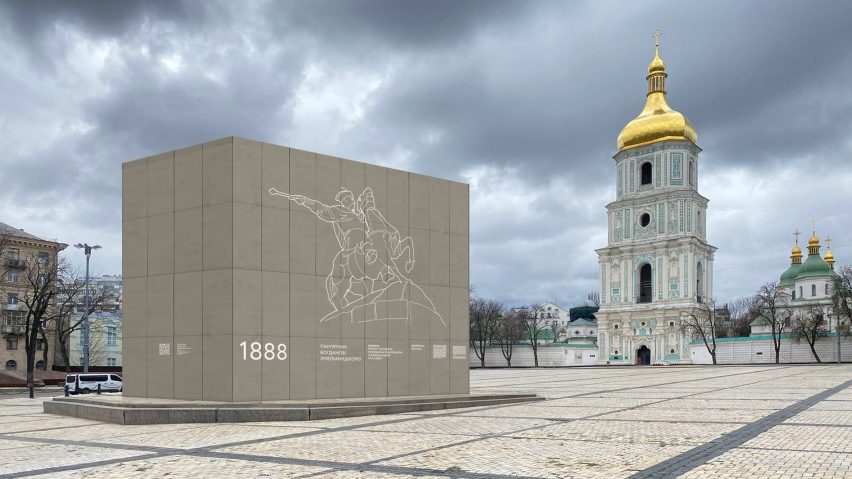
Eight wartime designs by Ukrainian studios
To mark one year since Russia's invasion of Ukraine, Ukrainian design writer Tetiana Makowska has selected eight products designed for the war effort.
This piece aims to draw attention to the fact that the war is not over. The war continues and Ukraine still needs support.
On February 24, 2022, Russia attacked Ukraine. It was exactly a year ago. For a year, we have lived under the sounds of air raids alerts and constant expectation of attacks from Russia.
For every Ukrainian, regardless of age and profession, the world is divided into the before and after, and design has acquired new meanings and functions. We have all realised that design is a method of solving specific problems; it is primarily about function, followed by a clear form.
Before the Russian invasion, the development of Ukrainian design kept pace with the world and harmoniously fit local messages into global agendas.
But after February 24, the essence and principles of artistic design changed, finding their place in war. Ukrainian designers have focused on creating functional objects necessary for our new wartime reality.
These objects help solve problems in shelters, dugouts, hospitals, and bombed houses. These objects help save lives, find enemies, protect heritage, and bring comfort where it seems impossible.
Of course, many designers continue to create aesthetically pleasing products for peacetime: furniture, lighting, and accessories. Thanks to them, we can feel the foundation and stay strong.
But today, I want to highlight eight military-related products:
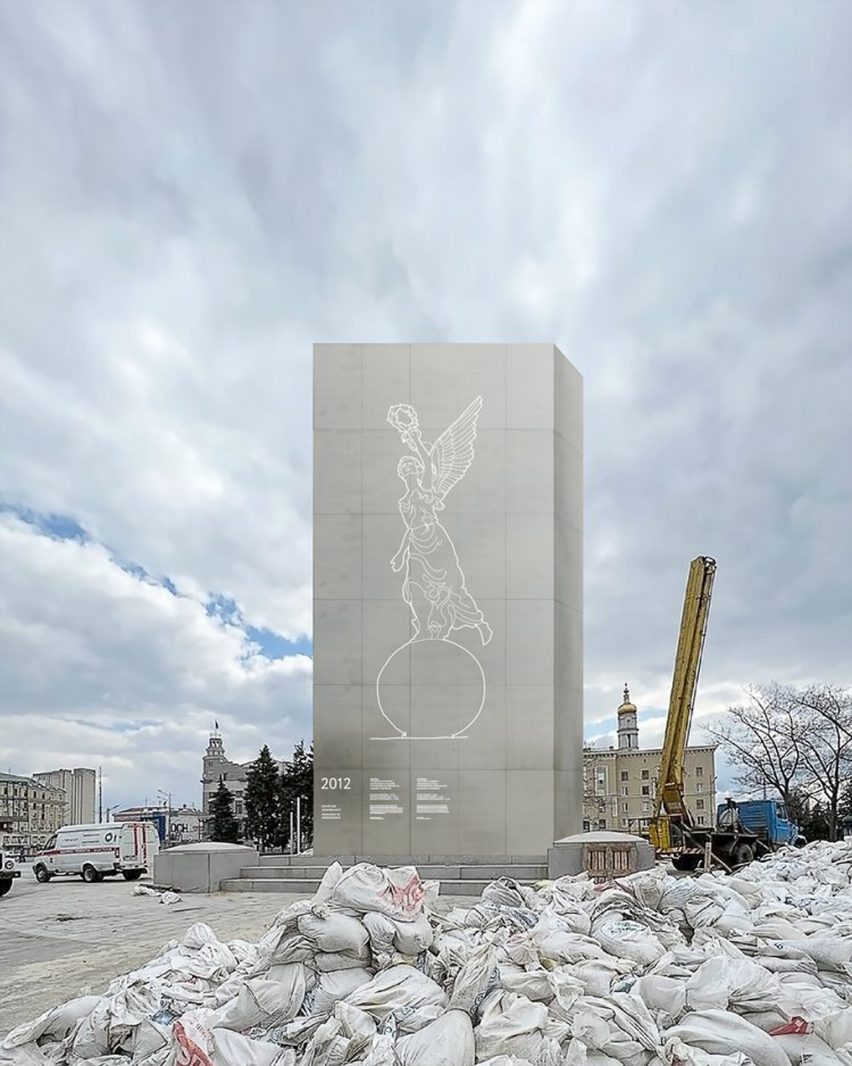
RE:Ukraine Monuments project by Balbek Bureau
Ukrainian studio Balbek Bureau has developed the RE:Ukraine Monuments (above and top) as a modular, easy-to-install protection system for the numerous monuments and sculptures under threat from destruction by Russian shelling.
The technological system can be applied to sculptural monuments of various sizes.
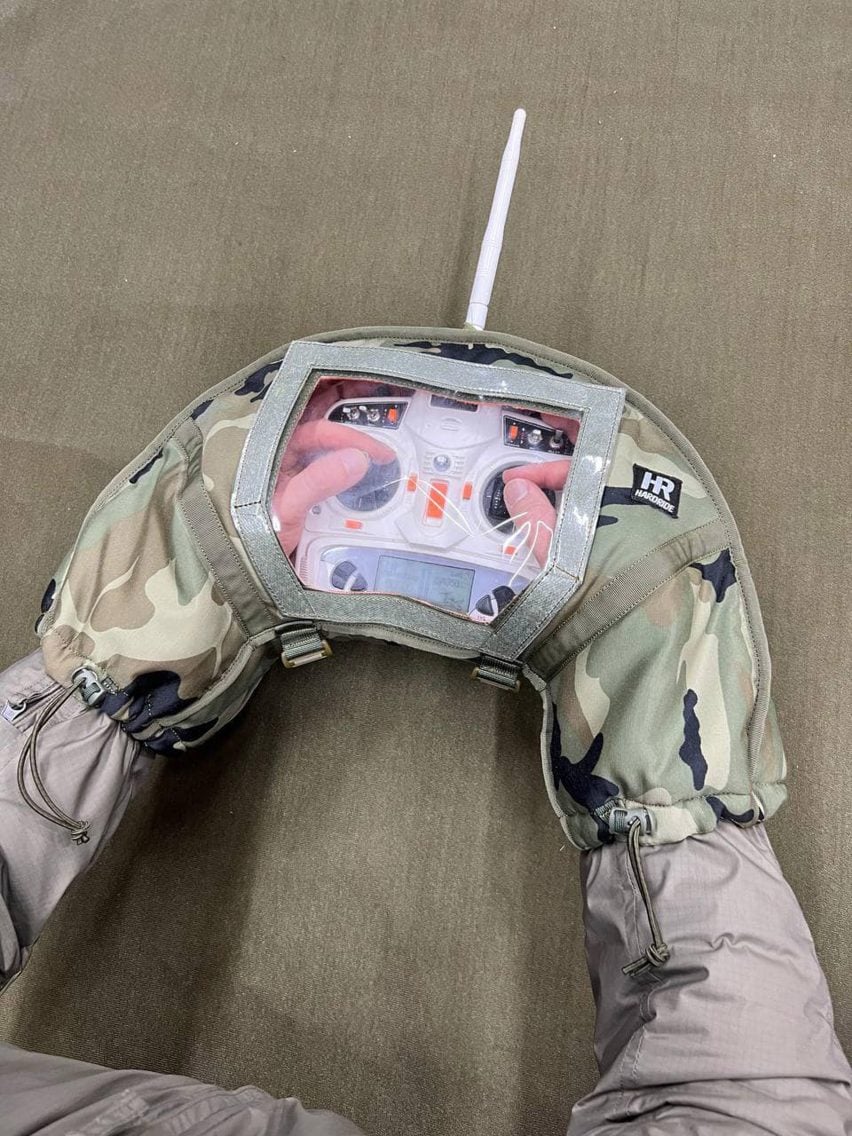
Gloves for drone pilots by Hardride
Clothing company Hardride has designed and manufactured outdoor gloves for drone operators with membrane fabric, interchangeable transparent/opaque panels, fleece, and insulation – only the best for the best.
The war has lasted a year. That is four seasons, three of which come with cold weather conditions that require not just durable but comfortable equipment.
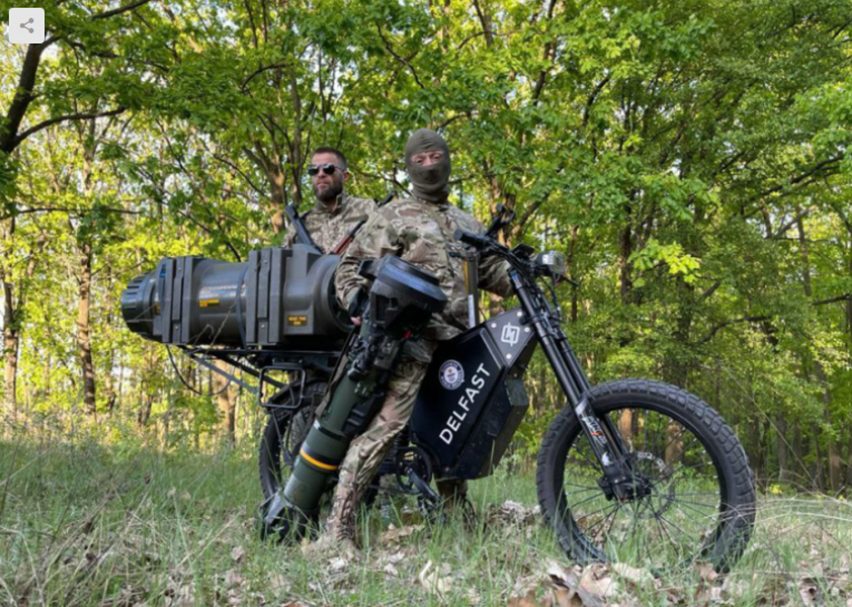
Karpaty e-bike by Container Design Studio for Delfast
The Karpaty e-bike designed by Container Design Studio is the leading model made by Ukrainian company Delfast, which was presented to the Ministry of Defence and the National Guard of Ukraine.
It is now actively used by soldiers on the front line, such as for transporting the NLAW (Next Generation Light Anti-tank Weapon).
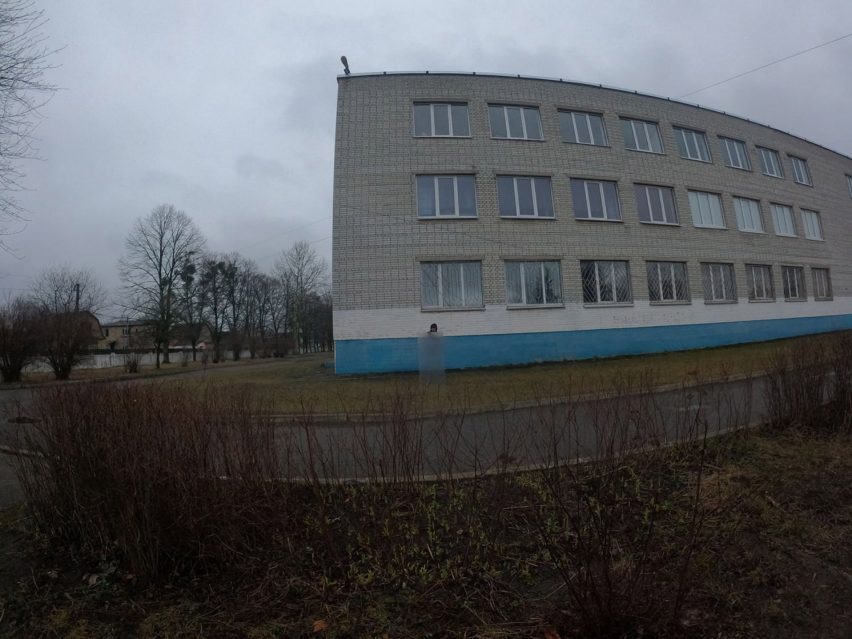
Invisibility shields by Yaroslav Cosmonaut
Before the war, Yaroslav Cosmonaut worked in concerts and had a small production business providing supplies for all kinds of installations for events. He now creates various wartime products including invisibility shields.
The sturdy shields are made from a lenticular sheet and transparent acrylic base. The idea is not original, but very useful in helping save the lives of warriors. Behind this simple invisibility shield, the person can entirely disappear and be invisible, even for thermal imaging cameras.
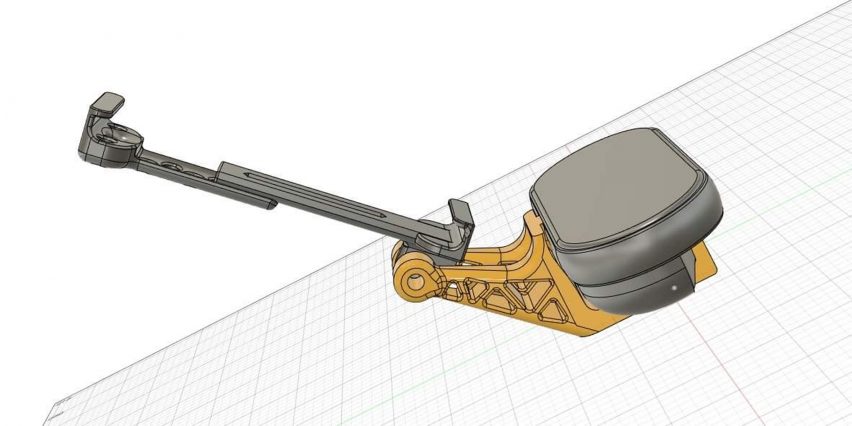
Tablet holder for drone remote control by Yaroslav Cosmonaut
Cosmonaut is one of numerous people discovering the power of design to solve problems on the battlefield. He created a tablet holder for drone operators.
"The remote controller of the frequently used drone Autel Evo 2 pro in the basic configuration allows for hanging only a phone, not a tablet," said the designer. "I began to come up with a universal folding tablet holder, which I drew in Fusion 360 and printed it on my 3D printer. This was the solution."
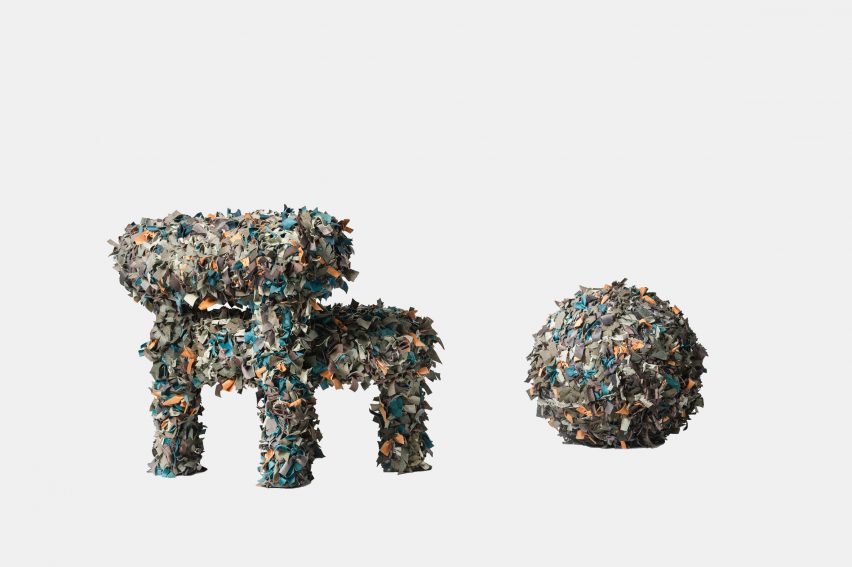
Gropius Low Chair Military Edition By NOOM in collaboration with Nataliya Bakulina and Antonina Latayko
Designed by Ukrainian design company NOOM, the Gropius Low Chair Military aims to draw attention to how the essence and principle of artistic design have changed in Ukraine since the invasion.
"We aimed to convey our feelings by combining our Gropius Low chair classic form developed in peacetime with a camouflage net from wartime. For every Ukrainian, regardless of age and profession, design has acquired new meanings and functions," said NOOM.
The studio adapted its Gropius chair, which was designed to mark the centenary of the founding of Bauhaus, by replacing its cotton covers with a camouflage net made up of more than 4,000 knots.
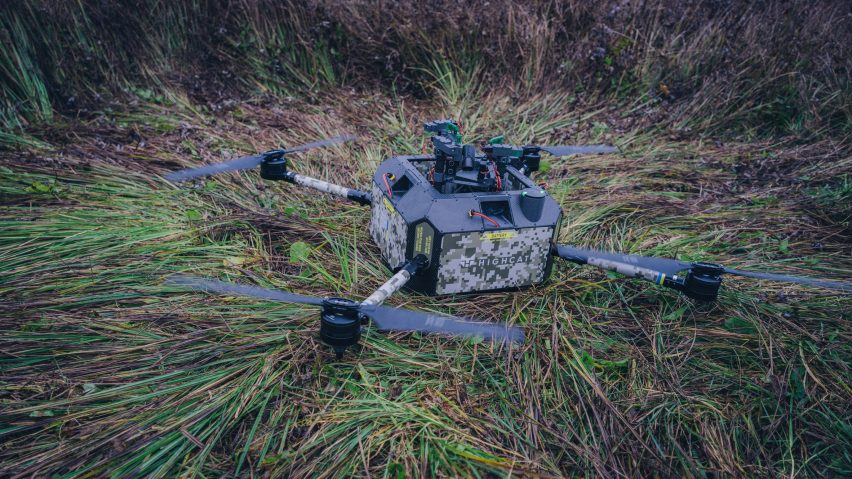
Highcat military drone by HALI TEX and Oleg Vereshchagin
Designer Oleg Vereshchagin collaborated with German company HALI TEX to adapt the HIGHCAT military drone specifically for the Armed Forces of Ukraine.
"I have never been a militarist," said Vereshchagin. "The war initiated by Russia changed my life cardinally. So I did this project in collaboration with a German company that produces drones for the Ukrainian armed forces. I couldn't stay away and contributed to this project."
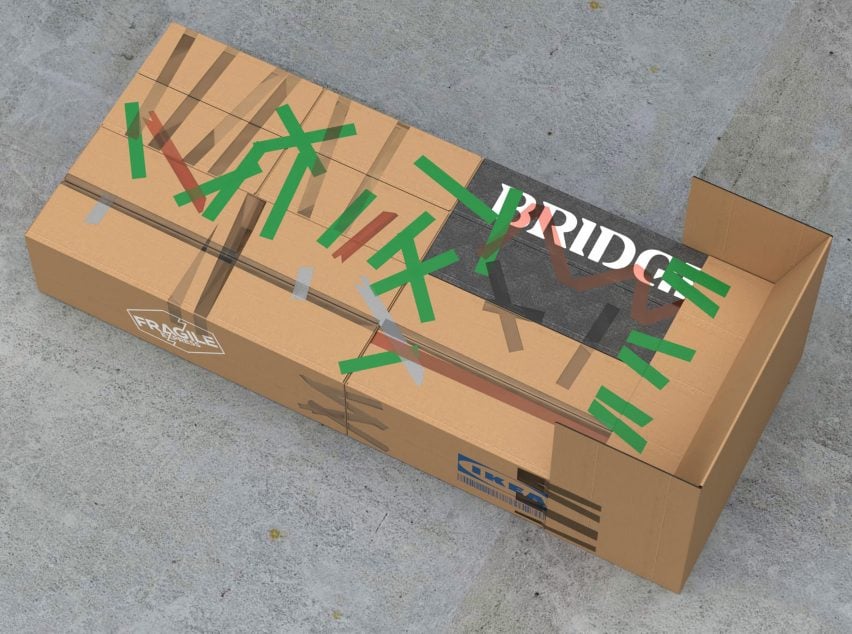
Cardboard-box bed by Oleg Vereshchagin
Refugees are often forced to sleep on the floor in poorly adapted rooms. Using available cardboard boxes (specially made or accidentally found) to create a bed can increase the comfort level significantly.
After use, the cardboard is recycled as usual. This solution can utilise idle packaging production during the war. Its very simple construction requires no special tools or skills to assemble.
Tetiana Makowska is a Ukrainian journalist who specialises in architecture and design-related businesses. She worked as an editor at the Ukrainian design magazines Object and Decor before becoming a freelance writer and pr specialist.